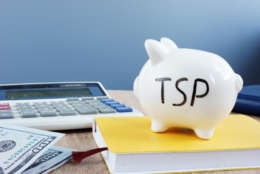Mike Causey
-
One longtime reader says feds should be aware of their full retirement age (FRA) and what it means to them.
January 06, 2020 -
Federal workers this month are getting a 3.1% total pay and federal-postal retirees are getting a 1.6% cost of living adjustment.
January 03, 2020 -
To protect their annuities from the ups and downs of the stock market, many active and most retired federal-postal workers have a major chunk of their Thrift Savings Plan account in the Treasury securities G fund.
January 02, 2020 -
Most people know the rule is buy low, sell high. If you buy that, the problem is knowing when the market has peaked or bottomed out.
January 01, 2020 -
Ask yourself if, when you start tapping your TSP you’ll be glad you invested pre-tax, or do you wish you had taken the Roth option?
December 31, 2019 -
The down side of the pay raise that takes effect next week is that more highly successful, long time civil servants will be hit by the pay cap.
December 30, 2019 -
Lots of people who live in high tax states relocate for retirement.
December 27, 2019 -
No shutdown. Check. A pay raise. Check. A retiree COLA. Check. Now what? Today’s guest columnist, Nancy Crosby says be happy, exercise—and when in doubt, take a nap.
December 26, 2019 -
If you are off today, have fun. If you're working, we thank you.
December 25, 2019 -
It's a very different Christmas from last year when tens of thousands of federal workers were locked out of their job.
December 24, 2019 -
Just about everybody knows the stock market is long overdue for a correction of 20% or more — maybe a lot more.
December 23, 2019 -
White collar federal civil servants are on track to get a 3.1% pay raise next year — the largest in a decade for 1.2 million civil servants.
December 20, 2019 -
After decades covering the federal beat some patterns become evident, like the question of a Christmas Eve day off.
December 19, 2019 -
Timing federal retirement right allows you to carry over the maximum amount of annual leave, and in 2020 be paid for most if not all of it at the new higher 3.1% pay raise.
December 18, 2019 -
Regardless of how your federal 401k plan is doing, December has some critical dates remaining which investors should know about to get the maximum gains and tax breaks
December 17, 2019














